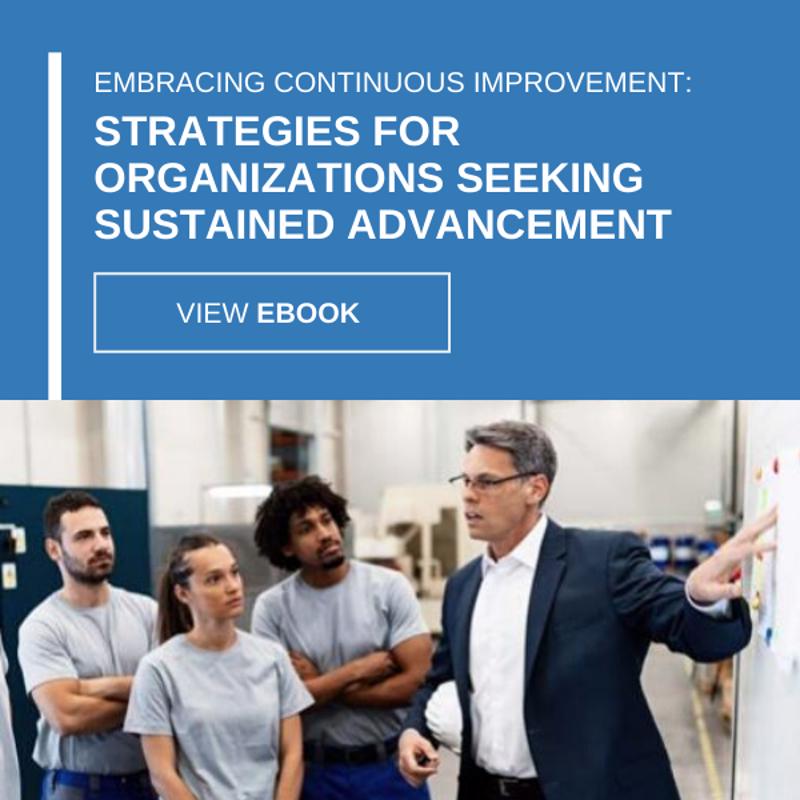-
Subscribe to Blog:
SEARCH THE BLOG
CATEGORIES
- Aerospace
- Asset Maintenance
- Automotive
- Blog
- Building Products
- Case Studies
- Chemical Processing
- Consulting
- Food & Beverage
- Forestry Products
- Hospitals & Healthcare
- Knowledge Transfer
- Lean Manufacturing
- Life Sciences
- Logistics
- Manufacturing
- Material Utilization
- Metals
- Mining
- News
- Office Politics
- Oil & Gas
- Plastics
- Private Equity
- Process Improvement
- Project Management
- Spend Management
- Supply Chain
- Uncategorized
- Utilities
- Whitepapers
BLOG ARCHIVES
- June 2025 (4)
- May 2025 (1)
- April 2025 (1)
- March 2025 (1)
- February 2025 (4)
- January 2025 (4)
- December 2024 (4)
- November 2024 (2)
- October 2024 (6)
- September 2024 (5)
- August 2024 (5)
- July 2024 (6)
- June 2024 (3)
- May 2024 (3)
- April 2024 (4)
- March 2024 (3)
- February 2024 (4)
- January 2024 (5)
- December 2023 (2)
- November 2023 (1)
- October 2023 (6)
- September 2023 (3)
- August 2023 (4)
- July 2023 (2)
- June 2023 (3)
- May 2023 (7)
- April 2023 (3)
- March 2023 (3)
- February 2023 (5)
- January 2023 (6)
- December 2022 (2)
- November 2022 (5)
- October 2022 (5)
- September 2022 (5)
- August 2022 (6)
- July 2022 (3)
- June 2022 (4)
- May 2022 (5)
- April 2022 (3)
- March 2022 (5)
- February 2022 (4)
- January 2022 (7)
- December 2021 (3)
- November 2021 (5)
- October 2021 (3)
- September 2021 (2)
- August 2021 (6)
- July 2021 (2)
- June 2021 (10)
- May 2021 (4)
- April 2021 (5)
- March 2021 (5)
- February 2021 (3)
- January 2021 (4)
- December 2020 (3)
- November 2020 (3)
- October 2020 (3)
- September 2020 (3)
- August 2020 (4)
- July 2020 (3)
- June 2020 (5)
- May 2020 (3)
- April 2020 (3)
- March 2020 (4)
- February 2020 (4)
- January 2020 (4)
- December 2019 (3)
- November 2019 (2)
- October 2019 (4)
- September 2019 (2)
- August 2019 (4)
- July 2019 (3)
- June 2019 (4)
- May 2019 (2)
- April 2019 (4)
- March 2019 (4)
- February 2019 (5)
- January 2019 (5)
- December 2018 (2)
- November 2018 (2)
- October 2018 (5)
- September 2018 (4)
- August 2018 (3)
- July 2018 (2)
- June 2018 (4)
- May 2018 (3)
- April 2018 (3)
- March 2018 (2)
- February 2018 (2)
- January 2018 (1)
- December 2017 (1)
- November 2017 (2)
- October 2017 (2)
- September 2017 (1)
- August 2017 (2)
- July 2017 (2)
- June 2017 (1)
- April 2017 (3)
- March 2017 (3)
- February 2017 (2)
- January 2017 (2)
- December 2016 (2)
- November 2016 (4)
- October 2016 (4)
- September 2016 (3)
- August 2016 (6)
- July 2016 (4)
- June 2016 (4)
- May 2016 (1)
- April 2016 (3)
- March 2016 (4)
- February 2016 (2)
- January 2016 (4)
- December 2015 (3)
- November 2015 (3)
- October 2015 (1)
- September 2015 (1)
- August 2015 (4)
- July 2015 (6)
- June 2015 (4)
- May 2015 (7)
- April 2015 (6)
- March 2015 (6)
- February 2015 (4)
- January 2015 (3)
CONNECT WITH US
Tag Archives: Professional Relationships
To help companies reach their highest potential, executives need to understand the challenges that come with owning and operating a business. Whether it’s finding creative solutions for operations management, developing products that can survive a competitive marketplace, or building a team of directors and officers, it’s no surprise that in today’s competitive landscape, executives must always look for ways to improve their company (both internally and externally) if they want to take things to the next level.
That being said, there is more than one roll-up-your-sleeves type of leader who seems to have gotten it right. Of course, their success didn’t come without hardships, obstacles, or lessons learned but it can appear that way on the surface. Not all successful leaders have to be entrepreneurs but there is creative problem solving that goes along with the territory of risking it all for a venture yet to be navigated.
Allow this cohort of self-made billionaire startup founders to inspire you by noting their successes and hiccups. Based on their years of experience in the startup world, Embroker has gathered 13 lessons from these iconic startup leaders to point you in the right direction whether you are seeking a new marketing strategy, launching a new product, or recruiting new team members. Check out the infographic below to learn more about the lessons of the most successful entrepreneurs to overcome executive challenges.
Learning from experience is pivotal to success when facing executive challenges. If you need guidance in operations management, contact USC Consulting Group today and put our 50 plus years of experience to work for you.
Some amount of ego can be beneficial to your organization. It can portray a sense of confidence and gravitas. However, too much ego can be toxic. As you climb the ranks of your company, you could fall victim to Hubris Syndrome, a phenomenon in which your ego grows as people listen to you and try to please you more often.
Here’s why that’s bad. An overinflated ego warps your ability to make business decisions. You might distort facts, looking for ones that mesh with what you want to believe. You become a target as others seek to exploit your cravings for attention and affirmation. You could become difficult to work with, micromanaging and criticizing others.
Luckily, there are a number of different ways to deflate a rapidly growing ego. Perhaps most importantly, you should hire people who disagree with you and who aren’t afraid to voice those disagreements. As a leader, it’s also helpful to practice gratitude often.
Check out the infographic below to determine if your ego has become too big for your business and how you can deflate it.
Guest Author: Meredith Wood
Bio: Meredith Wood is a vice president at Fundera. She is frequently sought out for her expertise in small business lending and frequently contributes to SBA, SCORE, Yahoo, Amex OPEN Forum, Fox Business, American Banker, Small Business Trends, MyCorporation, Small Biz Daily, and StartupNation.
While competitive salary and benefits are great incentives for workers to achieve and perform at their best, they want something more than good compensation. Employees also desire growth. And one of the best ways to reward particularly impressive personnel is by appointing them to middle-level management — a substantial rung on the journey up the corporate ladder.
Middle managers are aptly named, not only are they at the midpoint of the leadership hierarchy, but they also serve as the intermediary between the staff and senior executives. In many ways, they’re the glue that unites the various personnel components of a business.
At the same time, though, there’s nothing mid-level about middle management when it comes to responsibility. It’s about as pressure-filled as it gets because these leaders have numerous duties that they’re ultimately in charge of seeing through to fruition. The list of obligations is voluminous, including client relations, accounts receivable, administration of day-to-day routines, monitoring performance, and dealing with the various questions and concerns from the people they supervise. In short, mid-level management is not for rookies, nor is it something you can drop someone into and hope for the best.
Pivotal to their success is middle management training. The following details various ideas and strategies you can use to turn mid-level managers into high-achievement leaders.
Get them involved ASAP
Effective mid-level management is not something that can be effectively taught by reviewing a textbook or tutorial. Like a muscle, it has to be worked on consistently in order to grow and get better. As such, it’s important to provide learning experiences for mid-level managers so that they can hit the ground running.
“An experiential approach to middle management training can help them learn from experience.”
In some ways, mid-level management is akin to student teaching. People in this position may come into it with certain ideas about how to run things in various scenarios, but it isn’t until they actually get their feet wet that their assumptions are challenged and mettle tested. In short, an experiential approach to middle management training can help them learn from experience by putting them in decision-making roles right away. These situations can be reflected on in one-on-one meetings at the end of the week to go over how things went and provide constructive feedback for what went right, what went wrong, and what to do next time.
Draw on others’ experience
No matter how long you’ve been in business, you probably employ individuals who have been in middle management positions in the past. These people can be fantastic repositories for information regarding what they took away from the experience. You may want to ask them about what they wish they’d known before they become mid-level staff or a single piece of advice that they’d give a budding mid-level manager. Collecting as many opinions as possible can provide greater clarity and identify certain similarities that may be helpful to relay to the people you’re training.
Stress the importance of relationship building
Of course, everyone knows that they have a job to do when they come into the office or warehouse. But there’s a big difference between getting a job done, and getting it done well. Much of this depends on employees truly desiring to achieve more and be better. This can develop over time by mid-level managers establishing a good rapport with the people they supervise.
According to polling conducted by the Society for Human Resources Management, close to 60% of respondents said the relationship they maintained with their immediate supervisor was “very important.” However, only 40% indicated that they were “very satisfied” with the state of said relationship.
“Nearly 50% of individuals have left a job primarily due to a boss that they didn’t like.”
When personnel are on very good terms with mid-level managers, they may be more inclined to strive for success because they feel as though they’re a part of the team and seek to impress, thus increasing engagement as well as retention. A survey conducted by specialized staffing firm Robert Half found that nearly 50% of individuals have left a job for a different position primarily due to a boss that they didn’t like.
Middle management trainees can plant the seeds for developing stronger bonds by taking a genuine interest in their supervisees’ lives outside of the warehouse, such as their likes and dislikes or what they enjoy doing in terms of hobbies, activities, or just to unwind. This can also help build the camaraderie needed to reduce employee turnover.
Attend middle management training workshops
Human resource groups, staffing firms, and research organizations frequently hold seminars that offer interesting insights on how mid-level managers can become better in their day-to-day dealings. Surveys and polls may be presented that provide context into trends and why a different approach to employee or shop floor management is worthwhile. You may want to encourage trainees to attend these throughout the year to enhance ongoing learning.
Be considerate of employees’ contributions
Regardless of the working environment, stress is almost a given. Things need to get done and there’s only so much time to complete them. Burnout can result. In fact, based on a poll conducted by Accountemps, over 90% of workers attested to experiencing burnout on at least a somewhat regular basis.
Much of this can be allayed, however, by recognizing workers for all their hard work. Whether this is by talking to them one-on-one, sending a thank you note, or calling out particularly good work they did in a company-wide email, workers appreciate being appreciated, which can serve as the energy they need to dig a little deeper and realize that hard work truly does pay off. Mid-level managers should aim to be as congratulatory as possible to be an effective and inspirational leader.
While it’s true that hard work pays dividends, it’s not necessarily about working harder but working smarter. At USC Consulting Group, we empower performance working side-by-side with you and your staff in order to better understand the situation you’re in and what can be done to turn weaknesses into strengths and problems into solutions. Whether that’s by implementing process improvements or offering tips on what to look for in order to put the right leadership pieces in place, we can help you reach your potential through scoping, analysis, design, and implementation.
Professionals who ascend to the heights of their respective industries often develop healthy egos on their way up. An inflated sense of self-confidence can be an asset in certain situations, like when company leaders are looking to inspire staff – an important executive capability that 70 percent of professional development experts believe is critical to C-suite success, according to researchers from Harvard Business School.
But corporate egoism can also cause problems. In fact, many executives who suffer serious career failures can link these collapses to unhealthy pursuits of power or status, Entrepreneur reported.
Collaborating with consultants is perhaps when most business leaders flex their well-developed egos to the detriment of the organization. Even while they suffer from operational deficiencies, business leaders often balk at the idea of taking advice from external parties, including those with decades of experience and demonstrable successes. This prideful approach can start leaders down the path toward greater dysfunction and even organizational failure. To cultivate strong relationships with third-party consultants, executives must check their egos at the door. How? Here are some tried-and-true techniques:
1. Know the signs of egoism
Having the ability to identify the point at which confidence unravels into arrogance is key to tamping down egotistic tendencies. Leaders who effectively work with outside experts know the signs of unbridled egoism, including constant complaining and an overwhelming urge to intervene in projects just to take credit, according to The Business Journal. If these inclinations sound familiar, it’s time for leaders to take a step back, evaluate and correct their behavior before things get out of hand.
2. Model the ideal collaborator
Few professionals enjoy working with narcissists. Many executives today probably remember a time when they worked for or with an egomaniac, but have since lost sight of the damaging power of egoism as they climb up the corporate ladder. Some even take on the qualities of the executive despots they once detested.
Business leaders who find themselves in such positions can reverse the damage by going back to basics and modeling positive collaborative behavior, Inc. contributor and Voray CEO David Olk found. Olk himself learned that by avoiding defensive, self-centered action and focusing on relationship building, he could accomplish more as a leader. These and other similar strategies ultimately make for fruitful collaborations with third-party consultants.
3. Take a step back and support
Consultants enter partnerships with one primary objective: helping the business address its operational pain points. They do not function in the service of executives. But leaders sometimes act as though this is the case, attempting to lord over external contributors by questioning decisions with which they do not agree, which can hurt the organization when it’s at its most vulnerable. The advice of experts goes unbidden, and without buy-in from top brass, their efforts for operational improvements never materialize.
Business leaders looking to improve their organizations with help from consultants must revert to a supporting role and focus solely on the company for optimal results. How? Maintaining an open mind and asking questions are two good places to start. Additionally, leaders who accept that they have blind spots are usually more open to ego-less collaboration and therefore more likely to facilitate consulting success.
Executives who are considering bringing in outside operational experts would be wise to embrace these techniques and strive for improvement, ego-free. Here at USC Consulting Group, we’ve spent the past 50 years helping companies achieve sustainable growth through the implementation of strategies centered around supply chain, operational excellence, and more. Connect with us today to learn more about our experience and how we can help your business find firmer footing in the marketplace.
No organization operates in a vacuum. Economic developments and technological advancement have prompted businesses across all industries to cultivate new kinds of partnerships. In fact, most high-functioning enterprises, including massive consumer brands, outsource many mission-critical functions to third-parties, including engineering, product design and manufacturing operations, according to analysts for EY. But these same companies must carefully consider the details of their outsourcing strategies and determine whether farming out key production activities makes financial sense and aligns with their broader long-term goals.
By using outsourcing rationalization, businesses can effectively assess their outsourcing infrastructure and build partnerships that benefit their bottom lines without laying the seed for dysfunction. Here are a few steps that organizations usually take when they want to start down the path of true outsourcing rationalization:
Assessing internal motivations
First, businesses must analyze why they chose to outsource in the first place. For instance, 51 percent of manufacturers that outsource an element of their supply chain, production or maintenance did so in an effort to reduce the cost of goods sold and take advantage of external expertise, according to survey data from Peerless Research Group and the Supply Chain Management Review. Other common drivers for outsourcing include rapid growth, a need for greater agility and asset reduction.
The outsourcing rationalization process normally begins with an in-depth evaluation of factors that first prompted business leaders to consider third-party partnerships. Rationalization is all about leaving emotion at the door and looking at the logic behind an action – outsourcing in this case. Businesses must pore over each of its partnerships and ask whether they’re logical, which begins by investigating initial expectations and developing criteria for measurement. Has the relationship met these expectations? If so, do you have the figures to back it up? If not, why not? Did your organization set its sights too high, or did the partner fail to prove its value?
Pinpointing ideal partners
If a business is in the market for any strategic partnership, its likely seeking, in part, competitive pricing and proven reliability. But beyond these two pillars of every attractive partnership, businesses must consider how prospective collaborators will function in long-term strategic partnerships.
Again, this refers back to reassessing initial goals, but it extends further. Companies have to create a standard procedure for vetting partnerships as they pertain to the specific parts of their business in direct contact with partners. For example, if a manufacturer outsources its maintenance and parts of its production, it should not hold these discrete partnerships to the same standard. There should be separate standards for each that align with its specific maintenance goals, such as decreased cost or unplanned downtime, and specific production goals, such as higher quality or better throughput.
Furthermore, the standard or standards by which a business assesses its partnership should include cross-functional factors. Asset maintenance, for example, does not solely affect the production line, so equipment operators shouldn’t be the only people who weigh in on what makes a partnership like this valuable.
Grappling with internal demands
Outsourcing requires considerable internal commitment, as stakeholders must oversee relationships with third-party partners and ensure they generate optimal return on investment. Governance can make or break outsourcing programs. In fact, faulty relationship management is the most-cited reason for strategic partnership failure. Businesses that continue forward despite poor third-party governance see value leakage rates of between 17 and 40 percent, according to EY.
With this in mind, companies with strategic partnerships must devote the final stage of the outsourcing rationalization process to determining whether they have the internal expertise and resources needed to properly oversee relationships fully.
Organizations that properly work through these steps can gain a full understanding of how outsourcing might affect their operations and pursue or avoid external collaboration with full confidence. Here at USC Consulting Group, we’ve been helping companies navigate these and other key operational issues for 50 years. Connect with us today to learn more about our experience and how we can help your business get more out of its partnerships.
No matter how you define it, diversity is important to every company, and every team within every company, looking to succeed.
Cross-functional groups, which typically consist of stakeholders from different departments, ensure equal representation at the table when decisions are made and changes are plotted. Ultimately, they serve to streamline internal operations and bolster efficiency, productivity, and quality – or, at least, they do when they’re effective. And not many are.
Only a small number of cross-functional teams actually manage to achieve these aims, according to research published in Harvard Business Review. Stanford University Management Science and Engineering Professor Behnam Tabrizi collaborated with fellow academics and consultants to assess the performance of almost 100 cross-functional teams at more than two dozen leading corporations. Tabrizi and his colleagues discovered that three-quarters of these teams failed to meet customer expectations, align with organizational goals, and adhere to established budgets, timelines and project specifications.
So why did these teams fail? Tabrizi linked the dysfunction to a lack of accountability and clearly defined metrics for performance evaluation. To turn this situation around, these and other struggling cross-functional teams must first figure out how to assess their efficacy. Here are some proven and actionable strategies for keeping such diverse working groups in check and ensuring they reach their potential:
1. Make success the primary objective
This may seem like an obvious strategy, but it often falls by the wayside because of the very nature of cross-functional teamwork. Since members hail from different departments, they often have discrete and sometimes conflicting priorities, which can undermine collaboration and set them up to fail. Organizations can prevent this outcome by encouraging team members to place the success of the project above their individual interests. What’s more important is ensuring decisions don’t adversely affect their departments in ways that co-workers from other departments might not notice until it’s too late.
2. Establish project milestones
While quality of output is certainly the most important metric for cross-functional performance, using this indicator alone can also increase the likelihood of dysfunction and failure. Businesses that focus solely on the quality of the end result tend to not track project progress in real-time and address collaborative or operational friction as it arises. This is why experts advise companies to establish milestones that measure progress at each stage of the project. With this multiphase assessment strategy in place, business leaders can not only effectively monitor team performance but also intervene to stabilize projects about to tip over the brink of failure.
3. Mandate peer reviews
Cross-functional teams are only as strong as the individual contributors that staff them. Consequently, it is critical that companies looking to assess the effectiveness of these groups also evaluate how individual members perform. Of course, such groups often work in isolation, meaning external parties cannot observe team dynamics and compile feedback on specific members.
Peer reviews are a valuable option here, but enterprise leaders must be careful when using this information to drive improvement. Organizations that have management present peer review results should ensure that the feedback is constructive and framed in a positive way, as studies show that professionals do not respond well to overly negative feedback.
4. Involve outside team members
Cross-functional team members are best equipped to measure holistic success, as they live and breathe project execution. For this reason, many forward-thinking businesses allow these individuals to participate in the design of performance measurement systems for assessing the effectiveness of cross-functional collaboration, according to HBR. Teams can offer unique insights into how these groups should function on a microscopic scale and help build out key performance indicators that accurately contextualize outcomes at every stage of the project. However, business leaders should still provide some oversight and ensure that macro measurements comport with larger business goals.
5. Consider expert assistance
Sometimes operational leaders are ill-equipped to assess the performance of cross-functional work groups. Many shop floor supervisors and business leaders simply do not have enough time to build out effective measurement frameworks. Others lack the expertise needed to execute such tasks. In these scenarios, calling in an external partner can provide a much-needed outside opinion from an expert who has seen firsthand how cross-functional teams fail and how they reclaim what they lost.
Here at USC Consulting Group, we’ve been working with organizations across numerous industries for over 50 years, helping them transform their operations and adapt to marketplace shifts of all kinds. Connect with us today to learn more about our experience in team performance assessment, process improvement, and change management.
Businesses seeking to improve internally often focus considerable energy on trying to transform shop-floor operations through the introduction of new equipment, production processes or software. While such additions can surely lay the groundwork for change, these modifications alone cannot catalyze true operational transformation. The employees responsible for managing mission-critical production workflows must change as well. Tools are only as effective as the professionals who wield them.
To bolster worker performance and thereby meet internal improvement goals, organizations must drive behavioral change by promoting innovative workplace practices that pair well with new and improved processes and production assets. Here are the five secrets to driving such change:
1. Start from the top
Executives shape company culture through their actions, providing the behavioral blueprint for employees in every department. Enterprises embarking on internal improvement efforts should utilize this top-down approach to behavioral osmosis by leveraging influential leaders within the initiatives accompanying significant change on the shop floor. In fact, studies show that this is necessary for sustainable, organization-wide behavioral change. According to a study from Harvard Business Review, 70 percent of enterprise transformation efforts fail. And a lack of senior leadership is often why these businesses cannot bring about the cultural changes necessary to innovate their practices well. How can businesses avoid this unwanted outcome?
Leaders must examine their own behaviors and pinpoint conduct that undermines organizational flexibility and innovation. For instance, many executives are guilty of transferring inapplicable experiences from their past to make decisions about the future. Others prevent growth by engaging in personal perfectionism, attempting to cultivate unimpeachable executive narratives by avoiding situations that might result in failure. When business leaders identify and root on these behaviors, they open themselves up to change, setting the stage for behavioral transformation across the business and facilitating true internal improvement. Learn more about personal behavioral change in INPLCenter’s article on why simple behaviors seem impossible to change.
2. Embrace technology
Enterprise technology is often framed as a product of behavioral change. This, of course, is an accurate perception. A significant number of companies launch internal initiatives aimed at reconditioning staff and providing them with the knowledge they need to embrace newer processes centered on the latest hardware and software.
But technology is sometimes employed to support change management activities prior to the unveiling of any large-scale organizational shifts, according to CIO. Many platforms facilitate behavior change by providing leaders valuable information about how employees function during day-to-day operations, lending these decision-makers the baseline data they need to implement changes that help workers get the most out of new operations. Some solutions leverage neuroscience to help professionals grapple with amended production best practices. Employees using these advanced tools can access training modules that break down complex operational subjects into digestible instructional exercises that promote behavioral change.
Cutting-edge information technology offerings of this kind can do a lot for organizations searching for actionable tools that can support behavior change across the businesses and prepare workers for new shop-floor workflows.
3. Market innovation internally
Marketing teams often launch and oversee internal initiatives aimed at promoting behavioral change. A majority of these campaigns are designed to promote regulatory compliance or raise morale, but businesses can leverage similar promotional programs to encourage behavior change, which, in the context of operational improvement, means embracing new processes and tools.
Incubation campaigns take this approach a step further, calling workers to get involved in organizational transformation by providing professional insights and offering up potential solutions to pressing problems. Inward-facing marketing initiatives of this kind can spark behavior change among professionals in all departments, showing them that their superiors are interested in growing the business through their talent and experience.
4. Search for operational issues
Sometimes, employees are unable to adopt more innovative behaviors because of systematic roadblocks. No matter how forward-thinking the professionals trapped within these workflows may be, the surrounding workplace structures make it impossible for these individuals to act on their innovative urges. This is why businesses looking to prompt behavioral change and unlock improvements that improve their bottom lines must work to streamline operational frameworks that might prevent employees from contributing meaningfully to wider cultural change.
5. Work with external collaborators
While businesses can achieve behavioral change on their own, many may encounter stumbling blocks that require outside expertise and a fresh perspective. Here at USC Consulting Group, we’ve been working with organizations across numerous industries for more than 50 years, helping them transform their operations and adapt to marketplace shifts of all kinds. Connect with us today to learn more about our experience in process improvement and change management.
Is successful continuous improvement a top-down or bottom-up initiative? Ask lean manufacturing experts and they’re likely to equivocate. It’s not really one or the other in all cases. It’s both and neither at the same time.
Good CI doesn’t have managers that dictate new laws from on high, nor does it have ungoverned employees who change processes as they see fit. If anything, the best CI is more bi- or tricameral, or maybe even “middle-out.” Unfortunately, this ambiguity can undermine a CI program before it truly rolls out. Focusing on people, however, can bring remarkable clarity.

Hub-and-spoke model for continuous improvement
Picture a business as if it were a wheel, with executives at the hub, rank-and-file workers around the outer tire, and middle management as the spokes connecting the two. CI can come from the C-suite, where concentrated experience informs initiatives. CI can also come from workers who have valuable first-hand experience with assets and workflows. Finally, middle management can also lead CI by noticing problems at the hub or the tire that neither party can identify on its own.
But regardless of which direction CI flows, everyone agrees that people are the most important drivers of strong, reliable CI systems; ideas for improvement emanate from operators on the shop floor, managers in the back offices and executives in the boardroom to the rest of the business. Therefore, a company that empowers its employees simultaneously empowers its CI.
Why is that, and what can businesses that lack people power do to strengthen buy-in?
Cross-functional involvement: The other CI
An earmark of any CI initiative is the preference of long-term positioning over short-term gains. Rather than push through a change that might net a fleeting financial return, CI challenges businesses to restructure in ways that perpetually grow revenue, eliminate wasteful actions, and capably report on progress regarding both.
This horizon-line vision, however preferential to shortsightedness, conceals one crucial component of CI: At the end of the day, process improvements are carried out by people, all of whom have ideas and opinions about what’s new and what’s passed. Clashes are sometimes unavoidable. As they say, you can’t please everyone all the time.
What’s more important than satisfying professional egos, however, is remembering that every CI-related decision, no matter how small, affects the entire business. Companies must build cross-functional involvement into its general CI process, preferably during the initial strategic planning meetings. By considering everyone at the outset of every CI project, businesses retain one of the greatest tools for ensuring CI success. No one person or department should monopolize ideation.
With that said, project managers must act as countervailing forces to stakeholders and their input. They alone must place the recommendations of each into the context of the greater CI mission to justify their effect on how any given project is carried out.
Timeliness is as important as insight
According to an oft-cited survey of 137 enterprise managers conducted by renowned professors of quality management Clinton Longenecker and Joseph Scazzero, three of the top five reasons why businesses fail to uphold quality include “communication breakdowns,” “ineffective corrective action procedures,” and “lack of teamwork/conflict.”
What does that tell us about CI, which is arguably all about managing quality? CI isn’t only about what your team knows but how quickly and completely your team acts on what it knows. A business with a suggestion box emptied once a year takes, at best, a year and a day to make a single change. We all can and should aspire to much better.
Consummate advocacy among cross-functional team members makes for not only excellent ideas on how to change, but also excellent ideas for how to prioritize and implement change. Once businesses have nailed down how they ignite possible improvement projects and collaborate among relevant stakeholders, they must then lay the groundwork for frictionless execution, be it through daily meetings before every shift, efficient documentation, and/or redefining employee hierarchies regarding who reports to whom.
Again, we ask that you exercise caution and moderation. When it comes to CI project workflow, you don’t want too many restrictions preventing your team from completion, but you don’t want unrestricted processes either. Instead, take a phased approach, sometimes referred to as a gated approach: Once first steps are wholly finished, then everyone can move onto next steps.
Speak to the operations management consulting experts at USC Consulting Group to learn more about how to drive the fundamentals of continuous improvement at your business.
What best practices should businesses adhere to when involved in supplier negotiations?
Direct negotiation ought to take all the guesswork out of supplier agreements. However, when done without careful consideration, supplier negotiations can do more harm than good, injecting ambiguity into agreements rather than clearing it out – or worse, forcing both parties to walk away empty-handed. What best practices should businesses adhere to when negotiating contracts with suppliers?
1. Consider a commercial “mediator”
Two heads may be better than one, but bringing in a third party during supplier negotiations can help both sides of the table see each other’s arguments with greater clarity and appreciation.
Instead of quibbling over bill of materials and other static costs, effective mediators encourage an open discussion between both the supplier and the client about their respective needs and operational limitations, so either party doesn’t waste time or patience holding their cards close to the chest, so to speak.
Trained in the art of conflict resolution, arbitration could help supplier negotiations move away from price wars and get straight to the heart of the matter: setting the groundwork for a fruitful, long-lasting relationship that benefits everyone involved.
2. Know your supplier
It is unwise for businesses to head to the negotiating table without a full image of the supplier they seek to partner with. Not only could skipping out on this valuable “homework” mean signing a contract with suppliers that can’t offer everything a client expects, but it gives clients little to bargain with during supplier negotiations.
“Businesses with the best supplier relationships often receive perks”
After all, according to information released in the 2015 Working Relations Index, businesses with the highest supplier relations ratings see noticeable increases to market competitiveness and operating profit. That’s because clients with the best supplier relationships often receive perks like early peeks at new supplier offerings, more responsive service, and lower prices.
3. Define all terms as completely as possible
For both parties to land on a client-supplier agreement that satisfies everybody’s demands, contract must clearly and wholly specify all terms so as to foster a mutual understanding.
When suppliers and clients enter into a contract, they’ve essentially made their companies vulnerable to each other’s risks for the possibility of success. If a supplier receives no business, it cannot keep its doors open. If a client doesn’t receive raw materials or parts from a supplier, it too could severely damage operations. That said, spelling out terms plainly and precisely protects everyone’s interests, especially if both parties use active metrics to make agreements less susceptible to interpretation, according to the Acquisition Institute.
For example, should a client’s demand for materials grow beyond a supplier’s capabilities, the transitory period spent finding a supplementary supplier could cost the client significantly. However, if the client makes the supplier liable at the offset for any deficiencies in service, businesses effectively avoid cost-intensive issues that may occur. Moreover, this also gives suppliers glimpses into where their partners are headed and how suppliers’ own operations will need to adjust to keep them on as clients.
In today’s manufacturing industry, the “skills gap” is one of most pressing and talked about issues. Last year, many major media outlets covered the issue extensively, demonstrating its importance. Manufacturing requires a high level of technical proficiency and encompasses a wide range of competencies. At a time when the industry is witnessing the retirement of the largest percentage of its workforce, the lack of skill and technical knowledge of new workers is troubling.
The “skills gap” is a major problem in manufacturing today
The oldest baby boomers turned 65 in 2011, and each successive year, approximately 10,000 more seasoned workers will retire, according to the Pew Research Center. Fortunately, manufacturers can enact a few strategies to offset the impending brain drain that is taking place. IndustryWeek reported on a Pennsylvania chemical producer that faced the problem of having 150 skilled labor jobs open and unfilled. Ranging from welders to mechanical engineering technicians, the company struggled to hire qualified staff. The unfilled positions represented 38 percent of the 400 skilled-worker positions open at any point in time. The CEO of the company explained why it was so difficult to fill positions.
“In some cases [a position] takes as long as a year to fill because of a mismatch of skills — either in the skills area we need or in the geographic area where we need that skill,” said the CEO , according to the news source.
Lean methodologies will alleviate the skills gap problem
According to Reliable Plant, the lean manufacturing philosophy does great things for improving training practices and can help preserve expertise in a facility. When lean methodologies are used in training programs, the benefit is that a facility is able to make progress in multiple areas at once and keep best practices at the forefront. Instead of training employees and working toward continuous improvement in a silo-ed fashion, training should be ongoing and encompass continuous improvement principles to promote greater delivery and material development.
Accordingly, here are 5 ways companies can work on developing highly skilled employees and closing the skills gap:
- Implement Continuous Improvement
One of the best ways manufacturing companies can establish lean operations is to always improve upon existing processes. As an organization commits to developing best practices on an ongoing basis, that effort should involve constant training of employees. Plant improvements must always be reflected in process documents and then incorporated into employee work routines. Companies should motivate staff to collect data, analyze information, and raise job performance to the next level based on the findings. The most important thing to remember is to always improve. If a manufacturing company is able to do this, they will find less of a skills gap among their ranks because project managers will continually educate their teams on the latest amendment to their routines.
“The best thing an organization can do is facilitate the sharing of information.”
- Encourage staff communication
Companies that encourage their staff members to communicate about work issues, across departments and geographies, will be able to retain a greater amount of valuable tribal knowledge, should seasoned workers suddenly leave. The best thing an organization can do to avoid a skills gap is to facilitate the sharing of information, so when experts leave, their information will have already been passed down to the next generation. Also, for training purposes, giving workers a voice results in more active training sessions and higher levels of engagement. That enthusiasm will carry through to the plant floor, where the workers can turn knowledge into results. The more actively a company involves employees in training, the more effective the results are. - Focus on customer satisfaction
Interestingly, an effective strategy for raising technical expertise at a facility is making its training program very customer-centric. The lean manufacturing philosophy stresses the importance of creating value for the customer. Organizations can train their employees to think about the end result, regardless of their position. Someone on the assembly line with an understanding of what the customer ultimately wants to see is in a better position to make the right decisions. Likewise, managers can help their teams see what their individual skills gap is, and what they need to develop to excel in their job and create good products. It is important to remember that training employees to think of the customer is a way of putting his or her money to good use. Plant managers are also more likely to pass on their expertise when they understand how that act will benefit the customer in the long run.

Ongoing training programs are essential in the manufacturing industry.
- Address the reality on the ground
Often, plant managers will give directives to facility staff without getting involved in the day-to-day details those directives might entail. This is not an effective way to manage a plant and it is essential that managers take the time to get to know workers, listen to their feedback, and incorporate their opinions into company plans. When implementing a training program, management will benefit from this approach because they will have a chance to watch staff members perform their job tasks, which facilitates the development of better training materials. This approach is also helpful down the road, as managers will need to check to see if employees are putting their training to good use – preventing a skills gap. - Develop and maintain proper documentation
The importance of updating standard operating procedures in a facility cannot be emphasized enough. Lean managers not only use process documents to guide their operations and decision-making, but they also use visual aids for brainstorming and conceptualizing projects. One of the best ways to understand a concept is to use diagrams and process maps. Manufacturers should use work flow maps, diagram their production processes, and always refer to SOPs. When a facility operates in this way, training is greatly enhanced as the company culture is already based on doing things by the book and the skills gap is more easily avoided. The effort required to change the way something is done is much less if it can be addressed simply by amending process documents. If a facility does not use documentation with vigilance, introducing a new process can involve hours of explanation and unnecessary work.
Ultimately, learning and development in the manufacturing industry is crucial. Given the aforementioned skills gap, as well as the proven benefit of making training a regular part of everyday operations, lean methodologies should be a part of every organization’s approach for managing their operations.
















